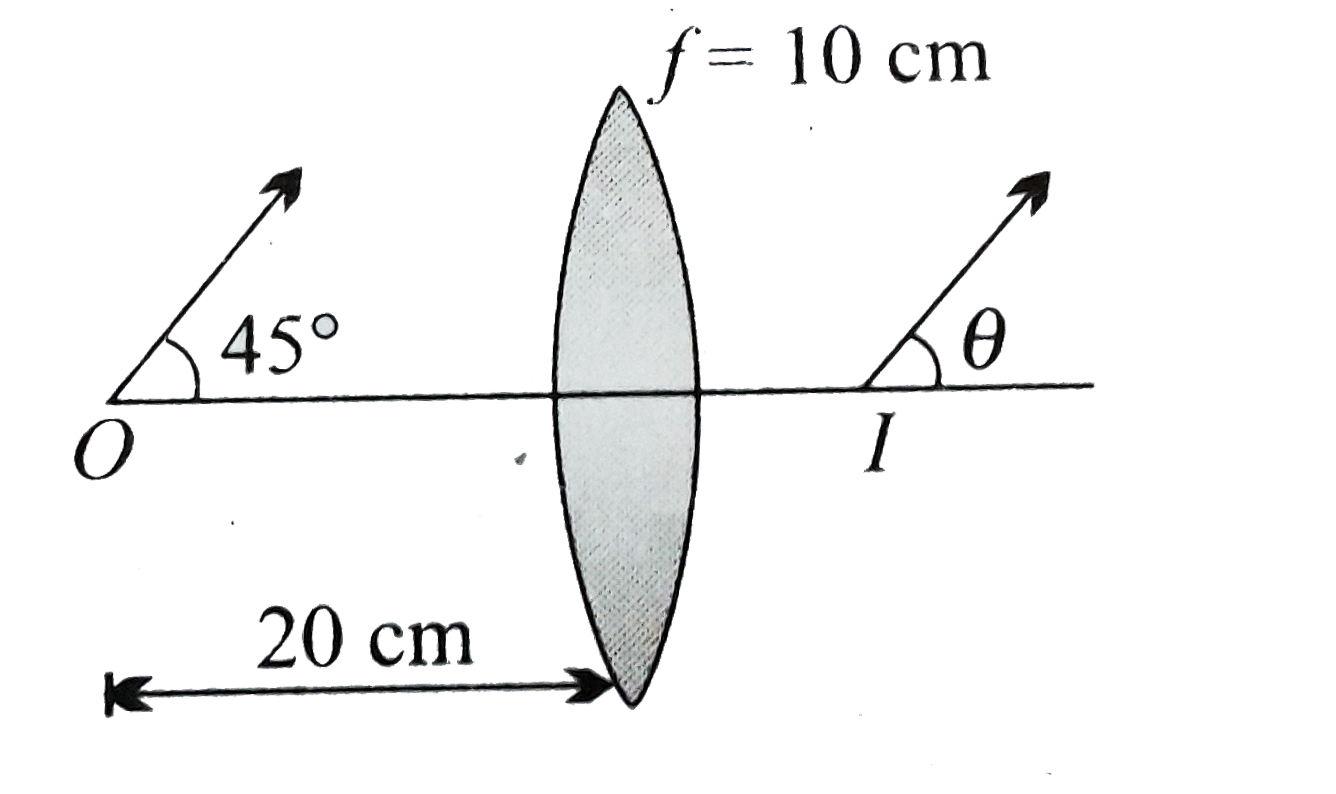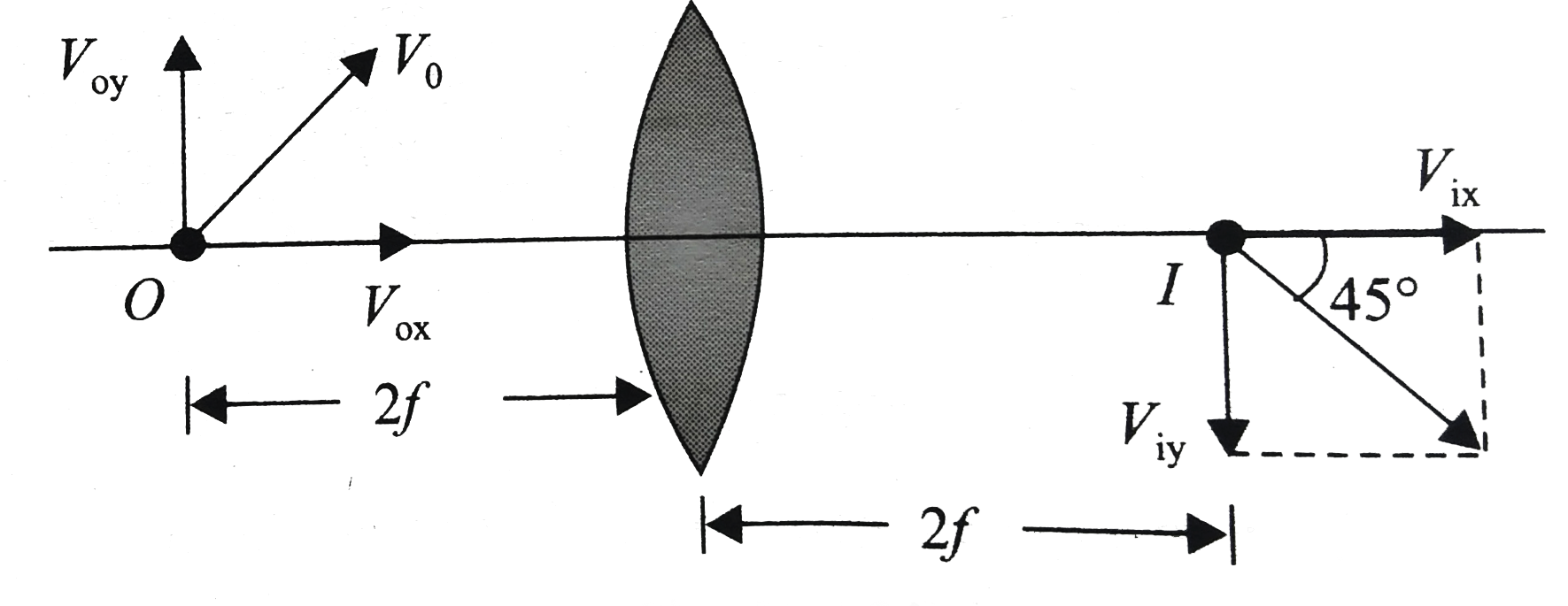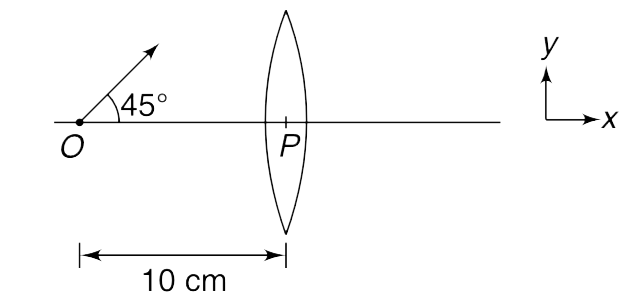An object starts moviing at an angle of with the principal axis as shown in figure. In front of a biconvex lens of focal length . If denotes the angle at which image starts to move with principal axis, then

The correct Answer is:d.
Object is at , so image is also formed at 2f.
and

Topper's Solved these Questions
- BOOK - CENGAGE PHYSICSCHAPTER - GEOMETRICAL OPTICSEXERCISE - Assertion-Reasoninig2videos
GEOMETRICAL OPTICS
- BOOK - CENGAGE PHYSICSCHAPTER - GEOMETRICAL OPTICSEXERCISE - Linked Comprehension51videos
GEOMETRICAL OPTICS
- BOOK - CENGAGE PHYSICSCHAPTER - GEOMETRICAL OPTICSEXERCISE - Subjective26videos
GEOMETRICAL OPTICS
- BOOK - CENGAGE PHYSICSCHAPTER - FRICTIONEXERCISE - QUESTION BANK1videos
FRICTION
- BOOK - CENGAGE PHYSICSCHAPTER - GRAVITATIONEXERCISE - Question Bank39videos
GRAVITATION
Similar Questions
Knowledge Check
- Question 1 - Select One
An object placed 10 cm in front of a convex lens of focal
length 15 cm. The image produced will beAa Real and magnifiedBb Virtual and magnifiedCc Virtual and reduced in sizeDd Real and reduced in size - Question 2 - Select One
The image distance of an object placed 10 cm in front of a thin lens of focal length +5 cm is
A6.5 cmB8.0 cmC9.5 cmD10.0 cm - Question 3 - Select One
Point object O is placed on the principal axis of a convex lens of focal length 20cm at a distance of 40 cm to the left of it. The diameter of the lens is 10cm to the right of the lens at a distance h below the principal axis, then the maximum value of h to see the image will be
A0B5cmC2.5cmD10cm
A point object (O) lies at a distance of 20 cm on the principal axis of a convex lens of focal length f=10cm. The object begins to move in a direction making an angle of 45° with the principal axis. At what angle with the principal axis does the image beings to move?
 View Solution
View SolutionMonochromatic light rays parallel to the principal axis (the x axis) are incident on a convex lens of focal length f. If the lens oscillates such that it tilts up to a small angle θ on either side of the y axis, then find the distance between the exterme positions of the image. Take secθ≈1+θ22 for small θ.
 View Solution
View SolutionA point object is placed at a distance of 12 cm on the principal axis of a convex lens of focal length 10cm. A convex mirror is placed coaxially on the other side of the lens at a distance of 10cm. If the final image coincides with the object, sketch the ray diagram and find the focal length of the convex mirror.
View Solution(a) Derive lens maker's formula for a biconvex lens. (b) A point object is placed at a distance of 12 cm on the principal axis of a convex lens of focal length 10 cm. A convex mirror is placed coaxially on the other side of the lens at a distance of 10 cm. If the final image coincides with the object, sketch the ray diagram and find the focal length of the convex mirror.
View SolutionAn extended object of size 2mm is placed on the principal axis of a converging lens of focal length 10cm. It is found that when the object is placed perpendicular to the principal axis the image formed is 4mm in size. The size of image when it is placed along the principal axis is ____________ mm.
View Solution

